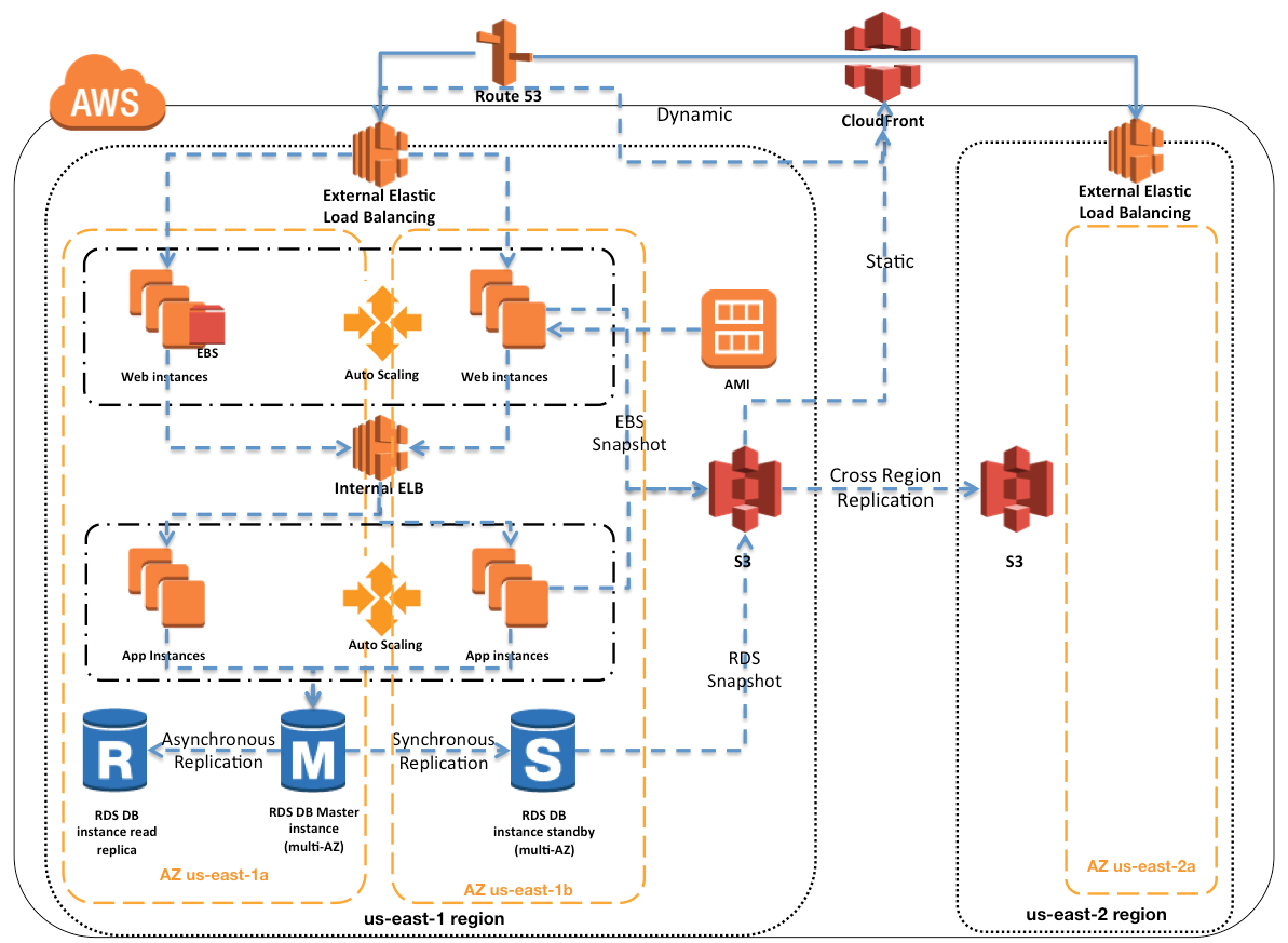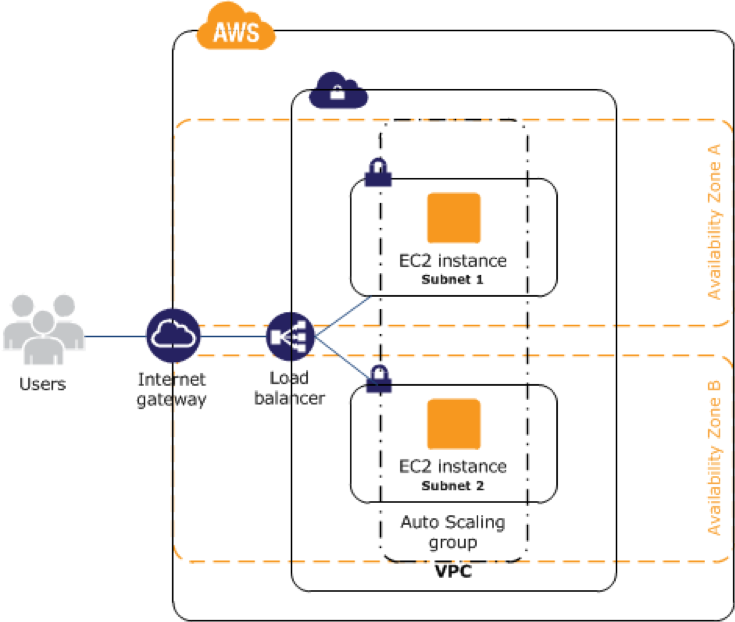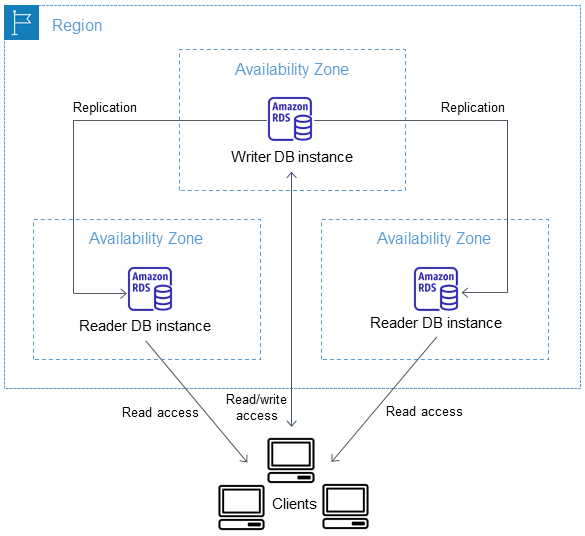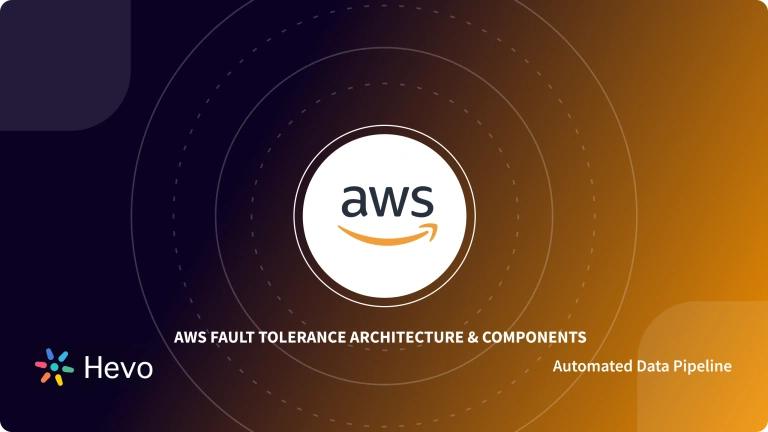Fault tolerance is essential for businesses to meet 24/7 demands and avoid frustrating customers with downtime, which can lead to lost revenue. Amazon Web Services (AWS) offers over 200 services, like EC2, Lambda, S3, DynamoDB, and RDS, making it a go-to platform for building fault-tolerant applications with minimal effort and cost. In this guide, we’ll explore AWS high availability, its architecture, benefits, and how it applies to AWS compute, database, and storage services.
Table of Contents
What Is High Availability?

System failures lead to downtime, which disrupts operations and can cost businesses, especially large corporations, thousands of dollars. High availability (HA) ensures that systems remain functional even when some components fail, minimizing downtime and reducing the financial impact of outages. This is crucial for businesses that rely on continuous system availability.
HA is measured using the “9’s” scale:
- 99.9% availability allows for up to 8 hours and 46 minutes of downtime per year.
- 99.99% availability allows 52 minutes and 36 seconds of downtime annually.
- 99.999% availability (commonly used for emergency response systems and mission-critical operations) limits downtime to about 5 minutes and 15 seconds per year.
These benchmarks help businesses plan and ensure their systems stay operational with minimal disruption.
Are you looking for an ETL tool to migrate your AWS data? Migrating your data can become seamless with Hevo’s no-code intuitive platform. With Hevo, you can:
- Automate Data Extraction: Effortlessly pull data from various sources and destinations with 150+ pre-built connectors.
- Transform Data effortlessly: Use Hevo’s drag-and-drop feature to transform data with just a few clicks.
- Seamless Data Loading: Quickly load your transformed data into your desired destinations, such as BigQuery.
- Transparent Pricing: Hevo offers transparent pricing with no hidden fees, allowing you to budget effectively while scaling your data integration needs.
Try Hevo and join a growing community of 2000+ data professionals who rely on us for seamless and efficient migrations.
Get Started with Hevo for FreeAdvantages of Using AWS High Availability for Web Applications
AWS high availability for web applications provides you with the following benefits:
- A completely secured network that uses a Web Application Firewall (WAF) to prevent common web exploits.
- AWS HA has provisions like Business Continuity (BC) and Disaster Recovery (DR) technologies to help businesses resume operations with minimal disruption.
- For cases where instant hardware failure may arise or are about to arise, AWS Auto Scaling automatically detects this and launches a new instance.
- AWS HA provides metrics on the cloud to closely monitor the application based on the number of users using the application or the memory consumed by the particular instance.
- The deployment of new features or updates may be done without causing any problems for present users.
AWS Regions and High Availability Zones
- Amazon hosts its web services across multiple locations, with each AWS location consisting of multiple availability zones and availability ranging from 99.9% to 99.999%.
- Each AWS Region runs in complete autonomy. This ensures the greatest level of fault tolerance and stability for user and application workloads.
- All AWS Availability Zones (AZs) are configured to operate in such a way that they are able to provide inexpensive, low latency network connectivity to other Availability Zones in the same region as well. These are connected to multiple Internet Service Providers (ISPs) and different power grids.
- Your application(s) can be safeguarded against failure in a single data center by deploying EC2 instances in various Availability Zones.
- It is important to run independent application stacks in more than one Availability Zone, either in the same region or in another region, so that if one zone fails, the application in the other zone can continue to run.
To know about Amazon Regions and Availability Zones in your area, visit Regions and AZs.
AWS Services Used to Achieve High Availability
AWS delivers high availability through a scalable, load-balanced cluster or an active-standby pair, among other approaches. The majority of Amazon Web Services are designed to be fault-tolerant and have high availability. The following list includes some of them:
- Amazon S3
- SimpleDB
- Amazon Relational Database (RDS)
- Amazon Simple Queue Service (SQS)
- Elastic Load Balancing (ELB)
- Amazon Simple Notification Service (SNS)
- Amazon Virtual Private Cloud (VPC)
- Amazon Machine Engine (AMI)
AWS Fault-Tolerant and High Availability Architecture
Here’s a high-level diagram of how different AWS services combine together to provide a fault-tolerant and high availability architecture on the cloud.

AWS High Availability: Compute, Databases, and Storage
AWS offers emergency response systems and high availability resilient systems in the cloud to best cater to user needs. It comes across three different dimensions:
- Compute: Compute dimension contains AWS services like Amazon EC2 and AWS Lambda that provide AWS HA features such as load balancing, auto-scaling, and provisioning across Amazon Availability Zones (AZ).
- SQL Databases: Amazon RDS and other managed SQL databases provide RDS high availability options for automatically deploying databases with a standby replica in a different Availability Zone.
- Storage Services: Amazon storage services, such as S3, EFS, and EBS, provide built-in high availability options. S3 and EFS automatically store data across different Availability Zones, while EBS enables the deployment of snapshots to different Availability Zones.
In the sections that follow, we’ll look more closely at the aforementioned dimensions and how AWS high availability may be applied to them.
AWS High Availability for EC2 Instances
Amazon EC2 lets you achieve a reasonably good level of high availability and resilience by using an Elastic Load Balancer, Auto Scaled AWS Environment, and Availability Zones built into the database cluster. The description of these components is as follows:
- Elastic Load Balancing allows you to launch several EC2 instances and spread traffic judiciously between them.
- Availability Zones allow you to distribute EC2 instances across many locations, reducing the risk of a single point of failure.
- Auto Scaling detects load increase and dynamically adds new instances.
To reap the benefits of high availability in Amazon EC2, it is recommended that you run EC2 instances in multiple Availability Zones (AZs). In case one of these zones becomes unavailable due to natural circumstances or power outage, Elastic Load Balancer can reroute traffic to operational AZ. At the same time, Auto Scaling automatically increases the number of instances to meet your high traffic demands. This can be understood from the figure displayed below.

AWS High Availability for SQL Databases on Amazon RDS
Amazon Relational Database Service is a collection of Managed Relational Database Services (RDBMS) running on the cloud. This functionality creates a fast & consistent input & output performance, and AWS RDS high availability for different database engines like MySQL, AWS Aurora, Oracle Database, MariaDB, PostgreSQL, and SQL Server.
To achieve RDS high availability, Amazon supports two easy-to-use options.
- Amazon RDS Multi-AZ Deployments: In Multi-AZ deployments, Amazon RDS creates a primary DB instance and synchronously replicates data to a standby instance in a different Availability Zone. This setup supports MySQL, MariaDB, PostgreSQL, Oracle, and SQL Server. In case of infrastructure failure, RDS automatically switches to the standby instance without manual intervention, keeping the DB instance endpoint unchanged.
- Multi-AZ Failover for Amazon Aurora Cluster: Amazon Aurora enhances availability for PostgreSQL and MySQL by duplicating data six times across three Availability Zones. This ensures no data loss and minimal service disruption during an Availability Zone failure. Aurora also allows running replicas within a DB cluster. If the primary instance fails, RDS promotes an Aurora Replica to primary and updates the endpoint automatically. If no replicas exist, RDS creates a replacement DB instance, ensuring high availability for your needs.

More:
AWS High Availability for Storage Services
The last dimension of our AWS high availability guide is storage services. Amazon Storage Services comprise reliable, scalable, and secure cloud storage services like Amazon Simple Storage Service (S3), Amazon Elastic File System (EFS), Amazon FSx, and Amazon Elastic Book Store (EBS).
- Amazon S3 is a secure, scalable object storage solution offering 99.99% availability and 99.999999999% durability for object storage.
- Amazon EFS provides managed file storage for NFS file systems on Linux with a Service Level Agreement of 99.99% availability, offering discounts if availability falls below this level.
- Amazon EBS is a scalable block storage service designed for EC2 instances, supporting high-throughput and transaction-intensive applications. It allows creating volumes in different Availability Zones, attaching them to instances, and taking snapshots for recovery.
- Amazon FSx is a high-performance file system that protects data by replicating it within or across AWS Availability Zones, monitoring for faults, and automatically switching to a standby server in case of failure.
Conclusion
This blog introduced AWS fault-tolerant systems across compute, database, and storage services, helping prevent failures with minimal intervention and low upfront costs. AWS offers an ideal solution for building reliable, highly available systems. Similarly, Hevo Data provides no-code tools to create fault-tolerant, reliable, and zero-data loss data pipelines in the cloud.
Hevo Data is a comprehensive ETL platform that allows you to migrate data from 150+ Data Sources like Amazon S3, Amazon Relational Database Services like Amazon RDS on PostgreSQL, Amazon RDS on MySQL, Oracle on Amazon RDS, MySQL Amazon Aurora, and many more. Our connector inventory now includes 60+ Free Data Sources from which you may obtain and move data without incurring any costs.
The best part about Hevo is that setting up Data Pipelines is a cakewalk; select your source, provide credentials and choose your target destination. And you are done!
Hevo can connect your frequently used applications to Data Warehouses like Amazon Redshift, Snowflake, Google BigQuery, Firebolt, or even Database Destinations like PostgreSQL, MySQL, or MS SQL Server in a matter of minutes. Using Hevo requires little to no training, and you will be able to set up your Data Pipelines without any help from your engineering teams.
Why not try Hevo and see the magic for yourself? Sign Up here for a 14-day free trial and experience the feature-rich Hevo suite first hand. You can also check our unbeatable pricing and make a decision on your best-suited plan.
Have any questions on AWS high availability components? Do let us know in the comment section below. Also, share any other AWS high availability services or features you’d want us to cover. We’d be happy to know your opinions.
FAQs
1. What is high availability on AWS?
High availability on AWS refers to the design of systems and services that are resilient to failures, ensuring minimal downtime. AWS achieves this through redundant infrastructure, automated failover, and multi-AZ (Availability Zone) deployments, allowing applications to continue running smoothly even during outages.
2. Are HA and DR the same?
No, HA (High Availability) and DR (Disaster Recovery) are not the same. HA focuses on ensuring continuous system uptime by minimizing downtime during failures, while DR involves strategies for recovering data and systems after a major disruption or disaster, often with a longer recovery time.
3. Is AWS EBS high availability?
AWS EBS (Elastic Block Store) offers high availability by replicating data within an Availability Zone, ensuring durability and fault tolerance. However, it does not automatically protect against entire Availability Zone failures, so using EBS with multi-AZ deployments or backups is recommended for higher availability.
4. What is the difference between AWS disaster recovery and high availability?
AWS disaster recovery (DR) focuses on recovering systems and data after a major failure or disaster, often involving a longer recovery time. High availability (HA), on the other hand, ensures continuous system uptime with minimal downtime, using techniques like redundancy and failover to maintain operations during smaller failures or outages.



